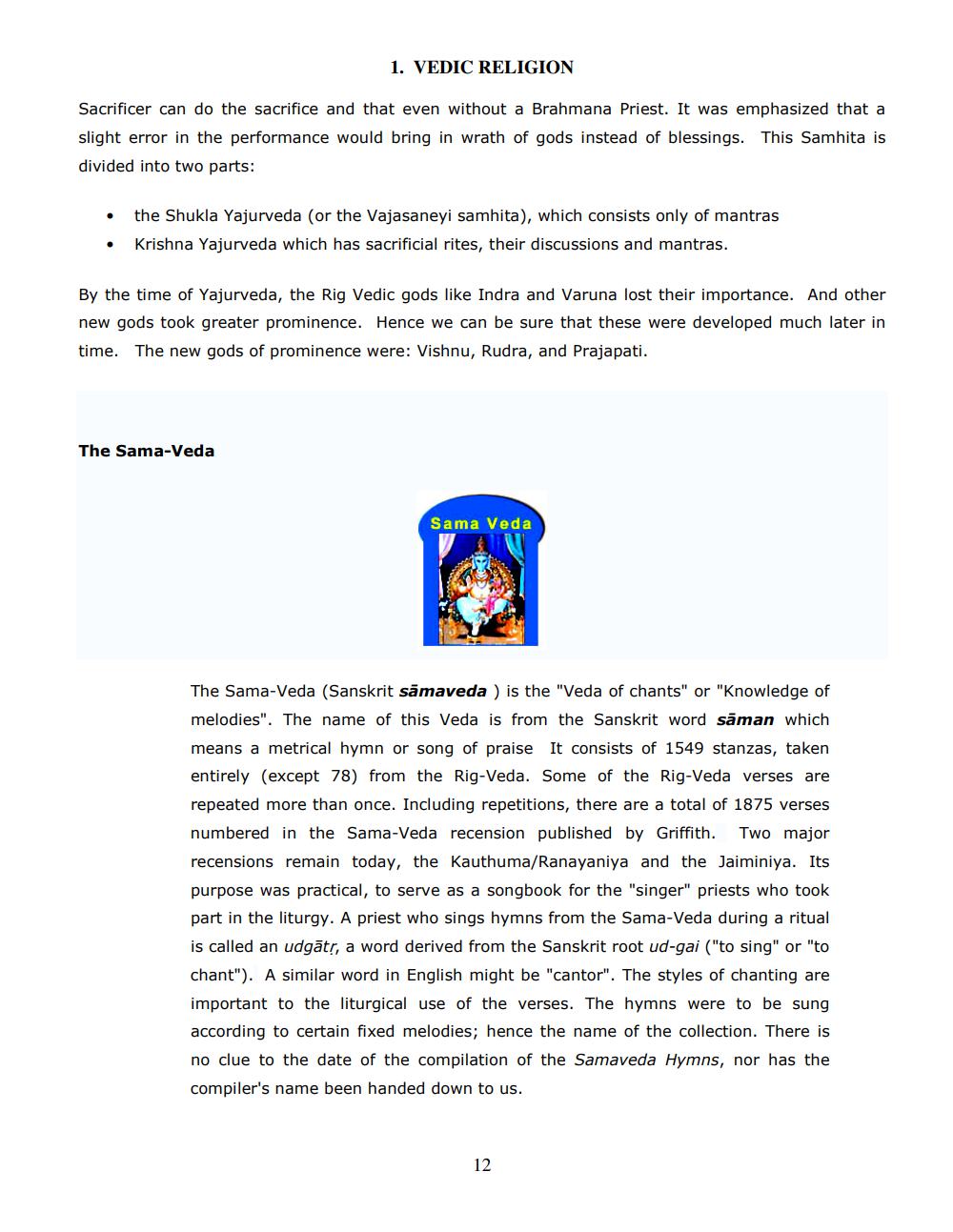________________
1. VEDIC RELIGION
Sacrificer can do the sacrifice and that even without a Brahmana Priest. It was emphasized that a slight error in the performance would bring in wrath of gods instead of blessings. This Samhita is divided into two parts:
• .
the Shukla Yajurveda (or the Vajasaneyi samhita), which consists only of mantras Krishna Yajurveda which has sacrificial rites, their discussions and mantras.
By the time of Yajurveda, the Rig Vedic gods like Indra and Varuna lost their importance. And other new gods took greater prominence. Hence we can be sure that these were developed much later in time. The new gods of prominence were: Vishnu, Rudra, and Prajapati.
The Sama-Veda
Sama Veda
The Sama-Veda (Sanskrit samaveda ) is the "Veda of chants" or "Knowledge of melodies". The name of this Veda is from the Sanskrit word sāman which means a metrical hymn or song of praise It consists of 1549 stanzas, taken entirely (except 78) from the Rig Veda. Some of the Rig Veda verses are repeated more than once. Including repetitions, there are a total of 1875 verses numbered in the Sama-Veda recension published by Griffith. Two major recensions remain today, the Kauthuma/Ranayaniya and the Jaiminiya. Its purpose was practical, to serve as a songbook for the "singer" priests who took part in the liturgy. A priest who sings hymns from the Sama-Veda during a ritual is called an udgāts, a word derived from the Sanskrit root ud-gai ("to sing" or "to chant"). A similar word in English might be "cantor". The styles of chanting are important to the liturgical use of the verses. The hymns were to be sung according to certain fixed melodies; hence the name of the collection. There is no clue to the date of the compilation of the Samaveda Hymns, nor has the compiler's name been handed down to us.




